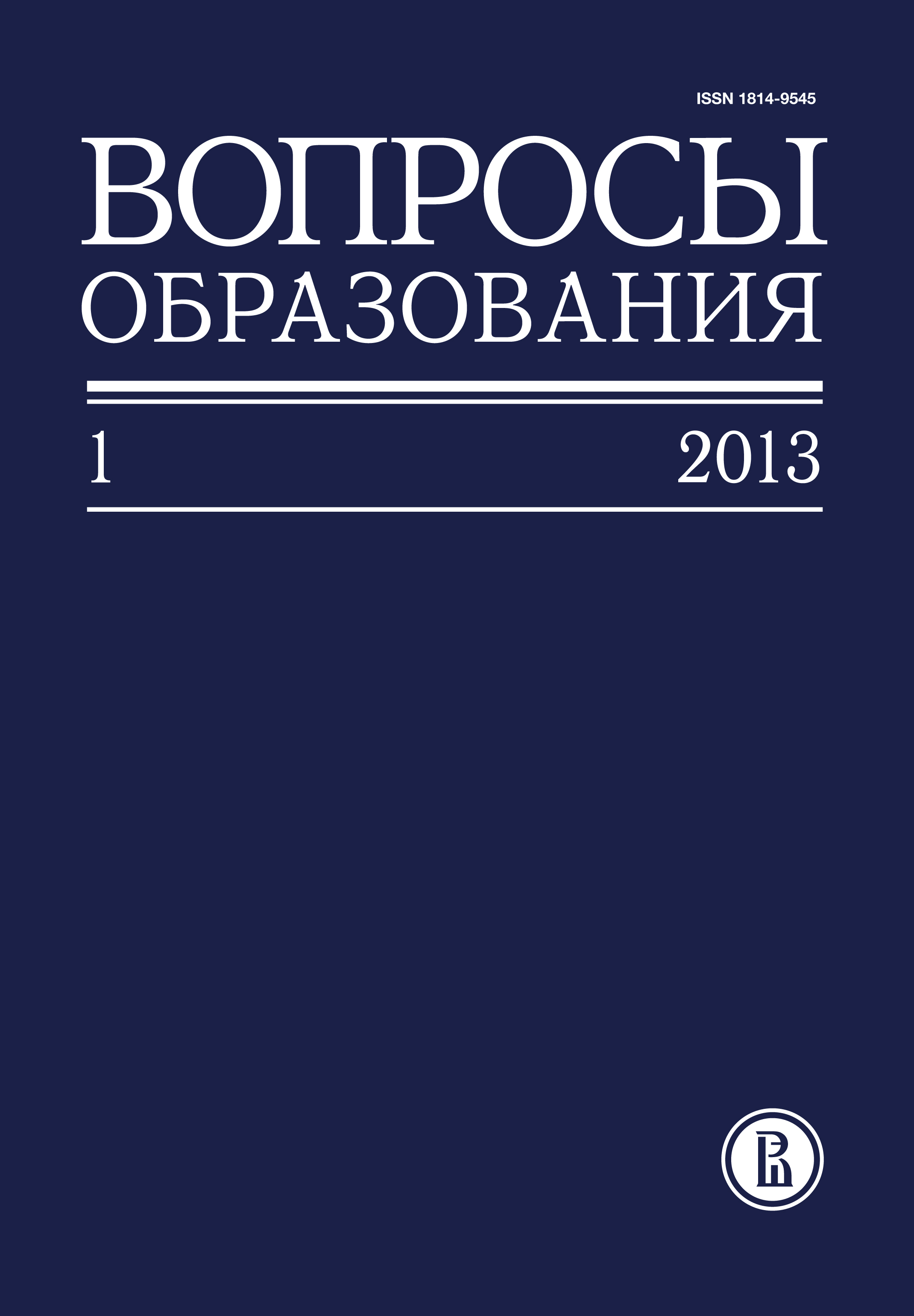Профессиональное образование в России: пути догоняющей и инновационной модернизации
Аннотация
Диденко Дмитрий Валерьевич — кандидат исторических наук, научный сотрудник Института социологии РАН. Эл. адрес: ddidenko@bloomberg.net
Адрес: Институт социологии Российской академии наук — Россия, 117218, Москва, ул. Кржижановского, д. 24/35, корп. 5.
Ключарев Григорий Артурович — доктор философских наук, профессор, заведующий отделом социально-экономических исследований Института социологии РАН. Эл. адрес: kliucharevga@mail.ru
Адрес: Институт социологии Российской академии наук — Россия, 117218, Москва, ул. Кржижановского, д. 24/35, корп. 5.
На материале массовых экспертных социологических опросов 2009–2011 гг. выявлены тенденции модернизационных преобразований в современной российской системе высшего образования. Показано, что высшая профессиональная школа сегодня функционально и ресурсно ориентирована в основном на подготовку кадров для догоняющего развития экономики и общества. 90% высших учебных заведений, в которых обучаются около 80% от общего числа студентов, реализуют модель догоняющего образования.
Выделены особенности моделей инновационного и догоняющего профессионального образования, проанализирована их характерность для российской системы высшего образования. Перечислены основные направления модернизационных инициатив вузов-инноваторов, рассмотрены промежуточные результаты реализации инновационной стратегии развития профессионального образования.
Анализ эмпирических данных показал, что в рамках инновационной модели происходит интенсивное увеличение образовательного пространства, реализуется принцип непрерывности образования. При этом деятельность учебного заведения не ограничивается рамками формального учебного процесса и получает выход в социально-экономическую сферу.
В организации учебного процесса преобладают формы и методы, свойственные догоняющей модели. В рамках этой модели образования особое значение приобретает целевой набор студентов и целевое образовательное кредитование как наиболее надежная гарантия выполнения выпускником и предприятием взятых на себя обязательств.
Выявлен значительный разрыв между содержанием образования и запросами практики, присущий вузам вне зависимости от модели образования. При этом установлено, что инновационная модель обеспечивает лучшие результаты трудоустройства. Подтверждено недостаточное участие вузов в реализации программ дополнительного образования, а также слабая связь вузов с рынком труда и конкретными предприятиями.








